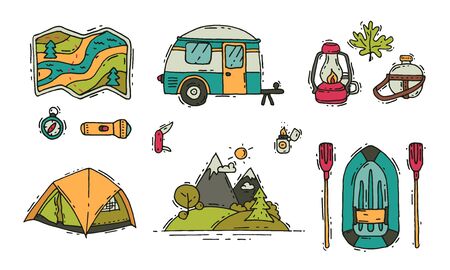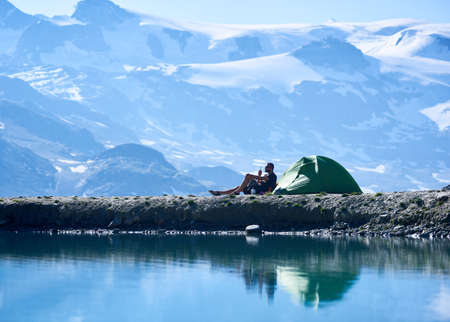1. Choosing the Right Dutch Oven
If youre aiming to elevate your campfire cooking game with gourmet-style meals, choosing the right Dutch oven is your first step. Whether youre searing steaks over an open flame or baking artisan bread under the stars, a quality cast iron Dutch oven can make all the difference. Heres what to look for when selecting one that suits upscale outdoor cooking.
Size Matters
Dutch ovens come in a variety of sizes, typically measured in quarts. For camping and gourmet-style meals, here are some common size recommendations:
| Size (Quarts) | Servings | Best For |
|---|---|---|
| 4-5 Qt | 2-4 people | Side dishes, stews, small roasts |
| 6-7 Qt | 4-6 people | Main courses, soups, chili, braised meats |
| 8+ Qt | 6+ people | Large family meals, group camping trips |
Enamel vs. Bare Cast Iron
When it comes to finish, there are two main types: enamel-coated and bare (seasoned) cast iron. Each has its pros and cons depending on how you plan to use it outdoors.
| Type | Pros | Cons |
|---|---|---|
| Enamel-Coated | No seasoning required, easy cleanup, great for acidic foods | Not ideal for direct campfire use, more prone to chipping |
| Bare Cast Iron | Perfect for campfire cooking, highly durable when seasoned properly | Requires regular seasoning and maintenance to prevent rust |
Top American Brands Worth Considering
If youre looking for high-quality Dutch ovens that balance performance with rugged durability, these trusted American brands have earned their spot around many campfires:
- Lodge: A go-to for outdoor enthusiasts; affordable, reliable bare cast iron made in Tennessee.
- Smithey Ironware Co.: Premium hand-finished cast iron with a smooth cooking surface; great for gourmet presentation.
- Cabela’s Camp Chef: Known for outdoor gear; their Dutch ovens are built tough and include lid lifters and carry handles.
- Barebones Living: Offers modern design with practical outdoor functionality; pre-seasoned and adventure-ready.
The Bottom Line on Selection
Your choice of Dutch oven should reflect your cooking style and where you’ll be using it most — whether its lakeside over coals or at home on the stovetop. Size up for group meals, stick with bare cast iron for open-fire durability, and invest in a brand that’s built to last through every culinary adventure.
2. Dutch Oven Essentials for Gourmet Cooking
If youre ready to take your campfire cooking to the next level, having the right gear and ingredients is key. Whether youre whipping up a rustic rosemary chicken or a rich chocolate lava cake, these Dutch oven essentials will help you create gourmet meals with ease.
Must-Have Tools & Accessories
A few smart tools can make all the difference when youre cooking outdoors with a Dutch oven. Heres what youll want in your camp kitchen:
| Item | Why You Need It |
|---|---|
| Chimney Starter | Makes lighting charcoal fast and even without lighter fluid. |
| Lid Lifter | Keeps your hands safe while checking on your food. |
| Heat-Resistant Gloves | Protects from burns when handling hot cast iron. |
| Tripod or Grill Grate | Gives you more control over heat and placement over the fire. |
| Charcoal Tongs | Makes it easy to adjust coals for perfect heat distribution. |
High-Quality Ingredients for Next-Level Flavor
You dont need a huge pantry to cook gourmet — just a few fresh, flavorful items can elevate any dish:
| Ingredient | Flavor Boost |
|---|---|
| Fresh Herbs (rosemary, thyme, basil) | Add brightness and depth to meats, stews, and breads. |
| Craft Oils (avocado oil, infused olive oils) | Enhance richness and add unique flavor notes. |
| Finishing Salts (smoked salt, sea salt flakes) | Add texture and a final burst of flavor to any dish. |
| Specialty Vinegars (balsamic glaze, apple cider vinegar) | Brightens savory dishes and balances richness. |
Smart Seasoning Strategies
Pre-Made Spice Mixes
Create small containers of your favorite blends before hitting the campsite—think Cajun rubs, Italian herb mixes, or BBQ spice blends. This saves time and keeps flavors consistent.
The Layering Technique
Add spices at different stages of cooking. Start with aromatics like garlic and onions early on, then finish with fresh herbs or zesty acids like lemon juice just before serving for that restaurant-quality taste.
Pro Tip:
If youre baking in your Dutch oven, try adding cinnamon or nutmeg directly into your dough or batter. These warm spices shine when slow-cooked over coals.
With the right tools and thoughtful ingredients, your Dutch oven becomes more than just a pot—it’s your ticket to five-star meals under the stars.

3. Campfire Techniques for Perfect Results
Mastering the art of Dutch oven cooking means understanding how to manage your heat source like a pro. Whether youre using charcoal briquettes or burning wood, controlling temperature is key to achieving those gourmet meals you’re aiming for. Lets break down some tried-and-true campfire techniques that can help you get perfect results every time.
Traditional vs. Modern Heat Management
There are two main ways campers handle heat when cooking with a Dutch oven: traditional methods using wood and embers, and modern approaches using charcoal briquettes. Each has its perks, so choose based on your comfort level and what’s available at your campsite.
| Method | Heat Source | Control Level | Best For |
|---|---|---|---|
| Traditional | Wood embers/coals | Low to Moderate (requires experience) | Rustic flavor, authentic feel |
| Modern | Charcoal briquettes | High (predictable heat) | Precision cooking, consistent results |
Controlling Temperature with Coals
A good rule of thumb when using charcoal is the “Rule of 3.” To reach about 325°F in a standard 12-inch Dutch oven, place 9 coals underneath and 15 on top. Adjust up or down by adding or removing coals—each coal adds around 10-15°F.
Briquette Placement Guide for a 12-Inch Dutch Oven
| Desired Temp (°F) | Total Coals | Top Coals | Bottom Coals |
|---|---|---|---|
| 325°F | 24 | 15 | 9 |
| 350°F | 27 | 17 | 10 |
| 375°F | 30 | 19 | 11 |
Using Wood for Flavor and Functionality
If youre going full-on rustic, wood embers can add both heat and smoky flavor to your dishes. Once your fire burns down to glowing red coals, scoop them under and over your Dutch oven. Keep an eye on the burn rate—you may need to refresh the coals more often than with briquettes.
Tips for Cooking with Wood:
- Select hardwoods: Oak, hickory, and maple burn hot and long—perfect for cooking.
- Avoid softwoods: Pine and cedar burn fast and can leave unwanted flavors.
- Add coals gradually: Maintain even heat by adding small amounts rather than dumping large logs.
The Lid Is Your Friend
The cast iron lid doesn’t just trap heat—it’s also where most of the top-down cooking happens. Spread your coals evenly across the lid for baking items like casseroles or biscuits. If you’re making something that needs browning on top, don’t be shy—pile on a few extra coals.
Casting Gourmet-Level Meals Outdoors Is All About Heat Control!
The secret to elevating your campfire meals from basic to gourmet is all in how you manage your heat. Whether you prefer the tradition of wood or the predictability of charcoal, mastering these techniques will give you restaurant-worthy results right from your campsite.
4. Upscale Recipes for the Outdoors
Just because youre out in the wild doesnt mean you have to sacrifice flavor or finesse. With a trusty Dutch oven and a few simple ingredients, you can bring gourmet-level meals right to your campsite. Whether youre cooking over a campfire or using hot coals, these elevated recipes are designed to impress without the stress.
Red Wine Braised Short Ribs
This dish brings rich, deep flavors straight to your picnic table. The key is slow cooking—perfect for a Dutch oven nestled in hot coals. Heres what youll need:
| Ingredient | Quantity |
|---|---|
| Beef short ribs | 2 lbs |
| Red wine (Cabernet or Zinfandel) | 2 cups |
| Beef broth | 1 cup |
| Onion, chopped | 1 large |
| Carrots, sliced | 2 medium |
| Garlic cloves, minced | 4 cloves |
| Fresh thyme and rosemary | A few sprigs each |
| Salt and pepper | To taste |
Sear the ribs directly in the Dutch oven until browned on all sides, then add the rest of the ingredients. Cover and let it cook low and slow for 3–4 hours. The result? Fall-off-the-bone tender meat with bold American flavor.
Creamy Campfire Potato Gratin
This comforting side dish layers thin slices of potatoes with cream, cheese, and herbs — all baked to golden perfection in your Dutch oven.
| Ingredient | Quantity |
|---|---|
| Russet potatoes, thinly sliced | 4 large |
| Heavy cream or half & half | 2 cups |
| Shredded cheddar cheese | 1 ½ cups |
| Garlic powder & onion powder | 1 tsp each |
| Dried thyme or parsley flakes | 1 tsp |
| Salt and pepper | To taste |
Layer the potatoes with cream and seasonings, sprinkle cheese between layers, then bake covered with coals on top of the lid for about 45–60 minutes. It’s cheesy, creamy, and perfect next to grilled meats.
Rustic Campfire Fruit Cobbler
A sweet ending to your gourmet outdoor meal — this cobbler pairs fresh fruit with a buttery biscuit topping that bakes beautifully in a Dutch oven.
| Ingredient | Quantity |
|---|---|
| Berries or sliced peaches/apples (fresh or frozen) | 4 cups |
| Sugar (for fruit) | ¼ cup (adjust to taste) |
| Lemon juice & zest (optional) | 1 tbsp juice + zest of 1 lemon |
| Biscuit mix (like Bisquick or homemade) | 2 cups prepared according to package directions |
| Cinnamon & nutmeg (optional) | A dash of each |
| Butter (for greasing & topping) | 2 tbsp |
Place fruit mixed with sugar and spices into a greased Dutch oven. Drop spoonfuls of biscuit dough over the top, cover with lid and hot coals on top, then bake for 30–40 minutes until golden brown. Serve warm with a scoop of camp-friendly ice cream or whipped cream if available.
Pro Tips for Cooking Gourmet at Camp
- Pre-chop veggies and pre-mix dry ingredients at home to save time
- Use parchment liners inside your Dutch oven for easy cleanup
- Keep a heat-resistant glove and long tongs handy for managing hot coals safely
- Rotate your Dutch oven every 15 minutes to ensure even cooking from all sides
These recipes prove that upscale doesn’t have to mean complicated—even out in nature. With bold American flavors and smart prep, you’ll be serving unforgettable meals around the fire in no time.
5. Care, Cleaning, and Longevity
Your Dutch oven isn’t just another pot—it’s the heart of your outdoor kitchen and, with the right care, a piece of gear you can pass down for generations. Here’s how to keep it in top shape whether youre cooking gourmet meals at a campsite or in your backyard.
Seasoning: The Foundation of Cast Iron Care
Seasoning is what gives your Dutch oven its natural non-stick surface and protects it from rust. New Dutch ovens often come pre-seasoned, but its always a good idea to season it yourself before first use and then regularly as needed.
Basic Seasoning Steps:
- Preheat your oven to 400°F (204°C).
- Wash the Dutch oven with warm water and mild soap (only this first time).
- Dry completely with a towel and place on stovetop over low heat to remove any moisture.
- Apply a thin layer of vegetable oil or shortening all over the inside and outside surfaces.
- Bake upside down on the center rack for 1 hour (place foil underneath to catch drips).
- Let cool in the oven before storing.
Cleaning After Use
Forget the dishwasher. Keeping your Dutch oven clean is simple but requires a bit of know-how:
| Do | Dont |
|---|---|
| Use hot water and a stiff brush or plastic scraper | Use soap or steel wool regularly |
| Dry thoroughly after washing | Let it air dry (this causes rust) |
| Reapply a light coat of oil after each cleaning | Store it while damp or greasy |
Rust Prevention & Re-Seasoning Tips
If you spot rust, don’t panic—it’s fixable. Scrub the affected area with steel wool until smooth, rinse, dry, then re-season like you did initially. To prevent rust in the first place, always store your Dutch oven completely dry and lightly oiled.
Pro Tip:
Place a folded paper towel between the lid and base when storing to allow air circulation and prevent moisture buildup.
Storage for Longevity
A well-stored Dutch oven will last for decades. Whether you’re packing up after a weekend in Yellowstone or storing it in your garage for winter, follow these tips:
- Keep it in a dry place away from humidity.
- Avoid stacking heavy items on top that could chip the enamel (if enameled).
- If stored long-term, check every few months for signs of rust or dryness—re-oil if needed.
Your Dutch Oven = A Family Heirloom
Treat your cast iron Dutch oven right, and it’ll return the favor meal after meal—whether it’s searing steak under starlight or slow-cooking chili by the lake. With proper care, it won’t just be part of your camping kit—it’ll be part of your story.


